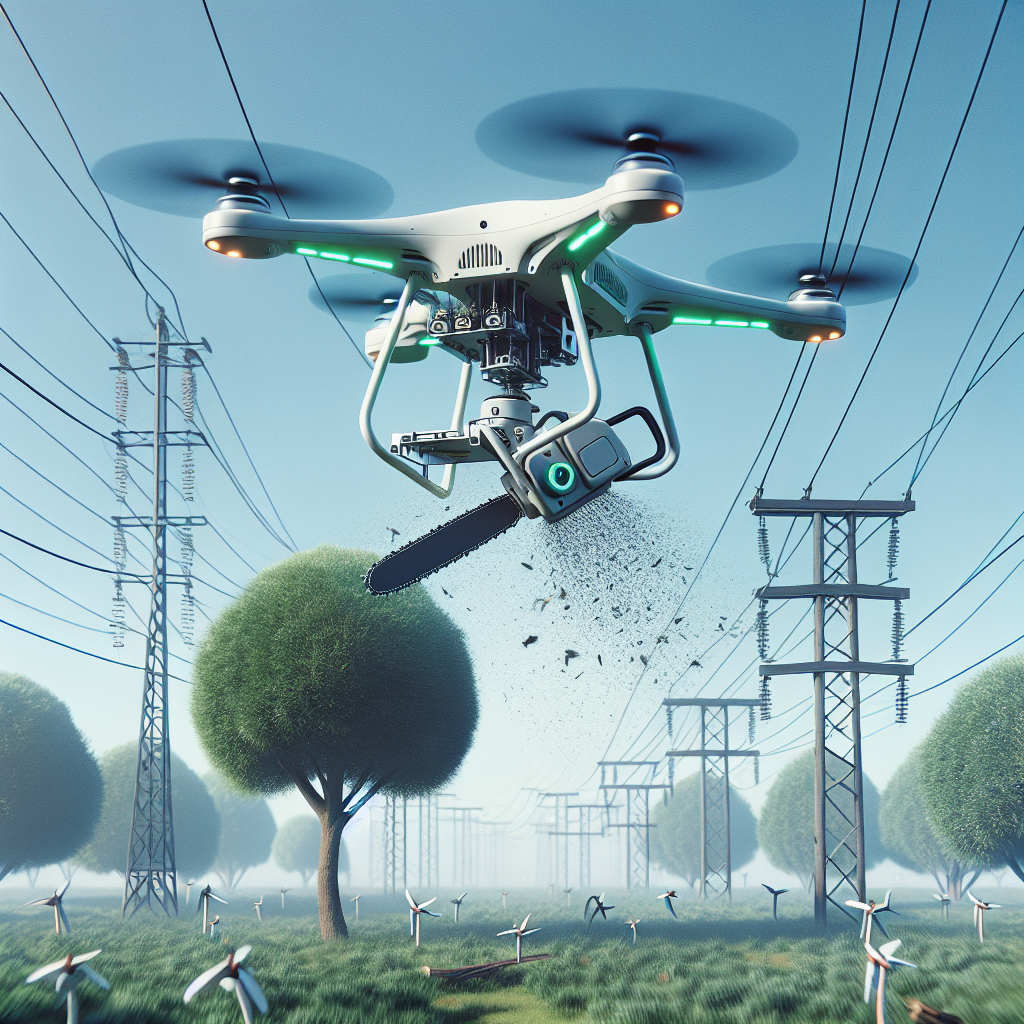
In an exciting development in the field of automation and safety, researchers at the University of Canterbury have introduced an innovative AI-driven chainsaw drone designed to enhance safety during tree trimming, particularly near powerlines. This cutting-edge technology aims to minimize the risks associated with traditional arborist work, where falling branches and equipment accidents can lead to severe injuries or even fatalities.
Professor Richard Green, a prominent figure in the computer science department, has been spearheading this project alongside UAV expert Dr. Sam Schofield. Their collaborative efforts have culminated in a drone capable of performing high-risk tasks typically handled by arborists. Through the integration of sophisticated algorithms and machine learning, this drone not only trims branches but also navigates complex environments with greater precision and safety.
Over the past eight years, the University of Canterbury team has worked diligently to develop unmanned aerial vehicles (UAVs) that can engage with their surroundings intelligently. As Professor Green notes, the transition from basic drones to advanced automated systems required significant advancements in understanding three-dimensional environments. This has been crucial for ensuring that the drone can interact effectively with the branches and surrounding obstacles during operation.
Before undertaking this project, the researchers conducted extensive consultations with various industries to identify pressing needs within arborist work. Their goal was clear: to create solutions that address real challenges faced by professionals in the field. This collaborative approach ensures that their innovations are not just theoretical but practical and applicable in real-world situations.
The introduction of the chainsaw drone is particularly relevant given the ongoing need for safer methods in high-risk industries. With incidents of accidents related to manual tree trimming work being a significant concern, this automated solution promises to mitigate some of those risks, allowing workers to focus on other critical tasks without the constant threat of physical danger from saws and falling limbs.
The potential implications for the arborist industry are substantial. By integrating such advanced technology, businesses can significantly improve their safety records while simultaneously increasing efficiency. This could lead to reduced insurance costs, lower liability risks, and enhanced employee satisfaction as workers are given tools that prioritize their well-being.
This innovation aligns with broader trends in the automation landscape, where AI technologies are being increasingly embraced to perform hazardous tasks across various sectors. As industries look for ways to enhance safety and efficiency, the chainsaw drone stands out as a prime example of how technology can directly contribute to better working conditions.
As this project moves closer to implementation, it remains crucial to address any remaining questions regarding operational protocols and regulatory compliance. For the chainsaw drone to become a standard tool in the arborist industry, it must adhere to safety regulations and demonstrate reliability in diverse conditions.
In conclusion, the chainsaw drone developed by the University of Canterbury is a remarkable example of innovation meeting the critical needs of safety in high-risk environments. As this technology begins to make its way into practical applications, it holds the promise of reshaping how arborists and utility companies perform their tasks while significantly improving worker safety and efficiency. The future of tree trimming looks brighter with AI-driven solutions paving the way for less risky, more streamlined operations.

Leave a Reply